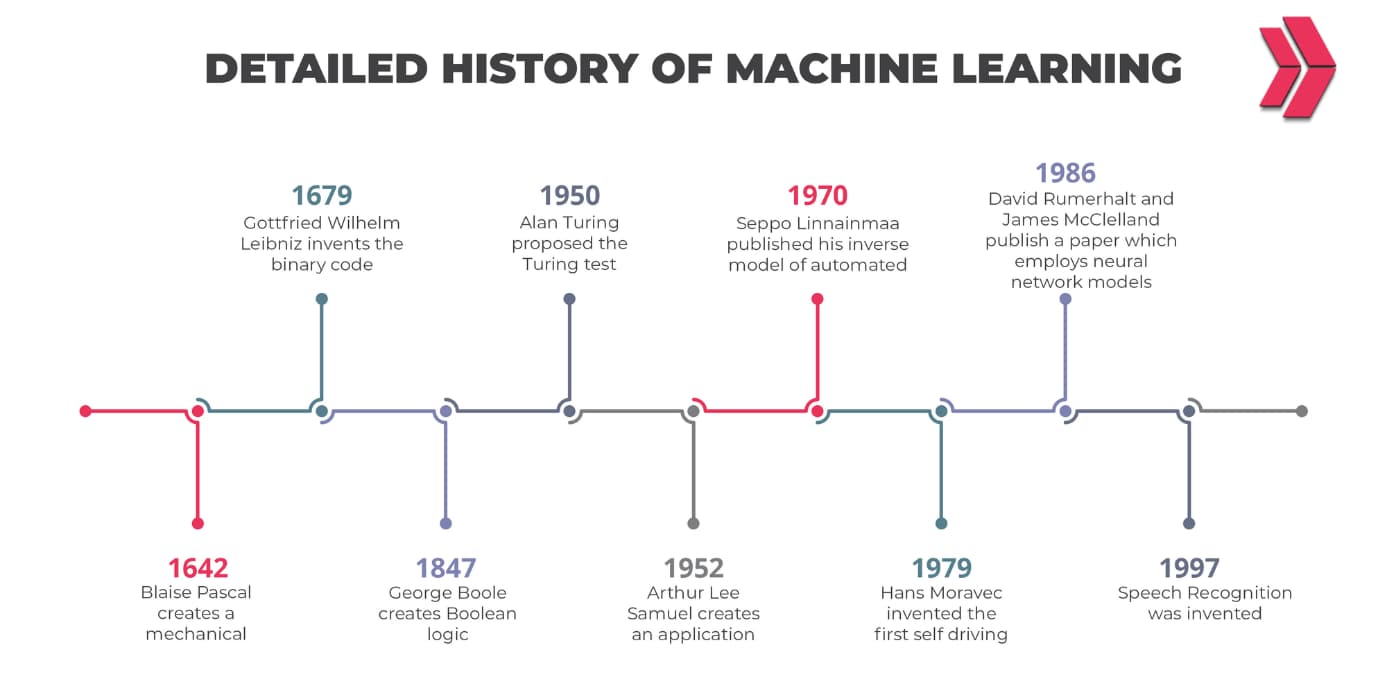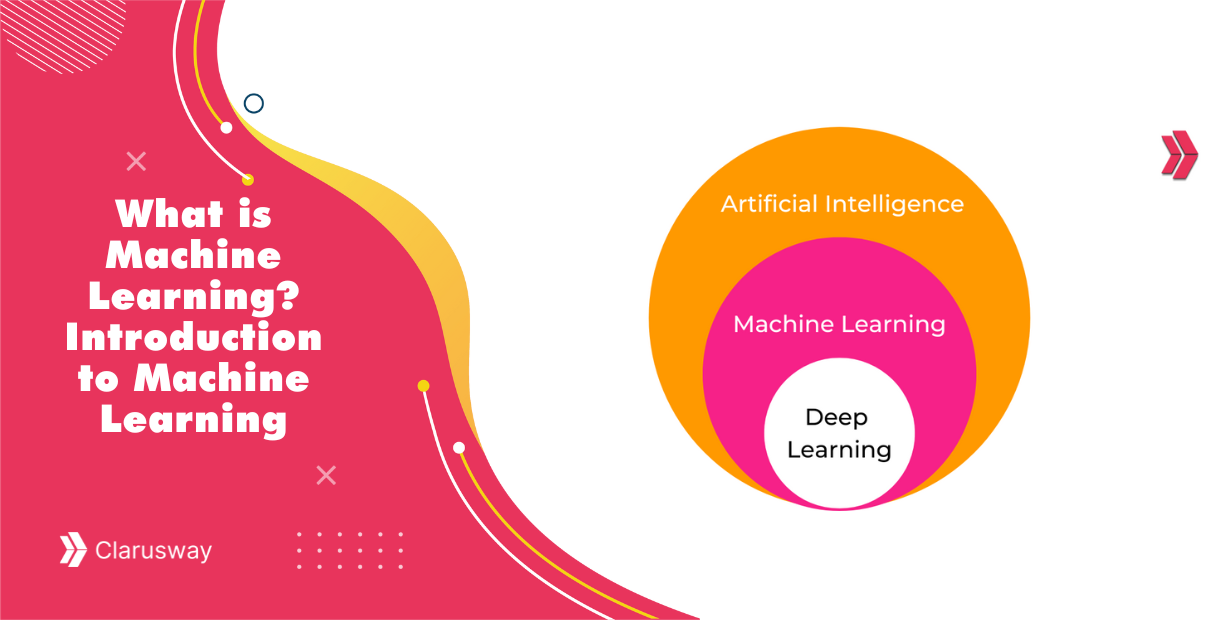The total number of computer programming languages is around 9,000, including 700 esoteric coding languages. However, just 50 of those are the most widely used programming languages today, making it difficult for aspiring data scientists to choose. Data science programming languages require working with high-volume data sets like those used in machine learning algorithms.
In this article, we’ll explore the top data science programming languages and why they’re so popular. From Python to R, we’ll provide a brief overview of each language and its unique features, making it an excellent choice for data scientists. We’ll also discuss the advantages and popular libraries of each language for data science, so you can make an informed decision about which one to learn.

What is Data Science Programming Language?
Data science programming language is a set of languages used to work, analyze and interpret data to derive insights and make informed decisions. Since data science enables organizations to make better decisions and strategize more effectively, knowing popular programming languages for data science to analyze business effectively is vital.
The most important data science programming languages are Python, R, SQL, Java, JavaScript, C/C++, Julia, Ruby, SAS, MATLAB, Scala, Perl, Swift, Go, Lua, and Kotlin. These are the languages worth languages to learn for data science. No one language is more important than another. These languages are popular in data science jobs. Furthermore, knowing at least one of these languages affects data scientists’ and data analysts’ salaries. Therefore, it is a good idea for data scientists and data analysts to master more than one programming language since learning one makes learning the other easier.
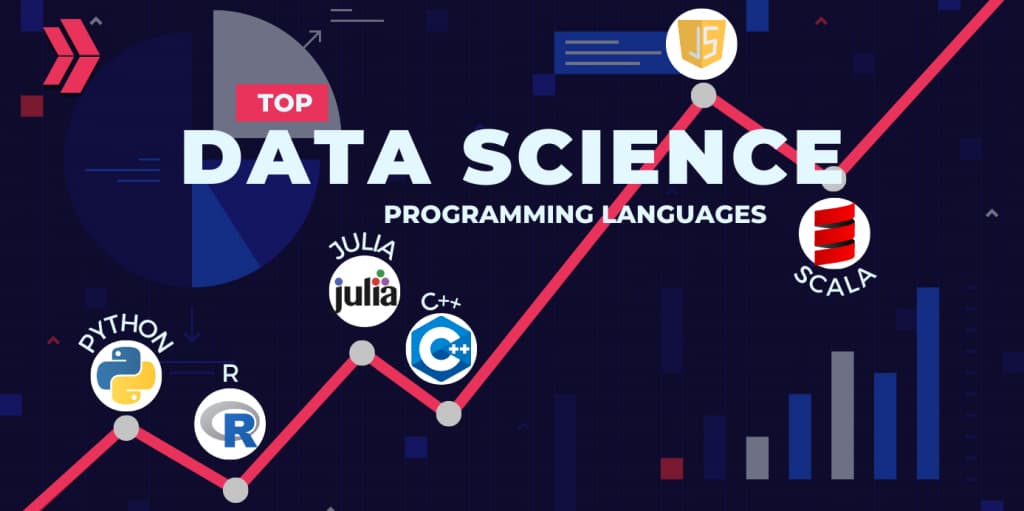
1. Python
Python is an open-source, user-friendly, object-oriented, high-level programming language with easy-to-learn grammar. Python was created by Guido van Rossum and was first released on February 20, 1991. The Python programming language takes its name from an ancient BBC television comedy sketch show called “Monty Python’s Flying Circus.” It is a popular option among novices. Around 70,000 modules and frameworks are currently available for data visualization, data analysis, and machine learning in Python. Python, a programming language for data science, is widely used in the IT world. It is accepted as one of the greatest data science programming languages.
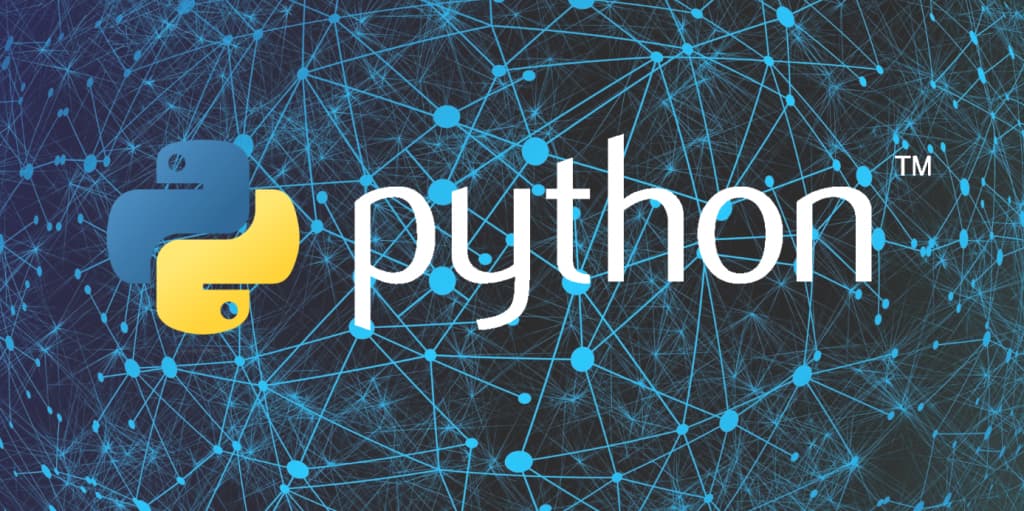
Advantages of Using Python for Data Science
The following are the advantages of using Python for data science:
- The ease of usage.
- The community is large and active.
- A diverse set of libraries and frameworks.
- Several programming languages are compatible.
- Has a large ecosystem of third-party packages that may be used to supplement its capabilities.
Examples of popular Python Libraries for Data Science
The Python libraries below are popular for data science;
- TensorFlow
- NumPy
- Pandas
- Seaborn
- Keras
- SciKit-Learn
- PyTorch
2. R
R is a computer programming language that is commonly used in data science and statistics. R is an open-source and high-level programming language used for data analysis, statistical analysis, and visualization. R was created in 1992 by Ross Ihaka and Robert Gentleman and released in 1995 and 2000.
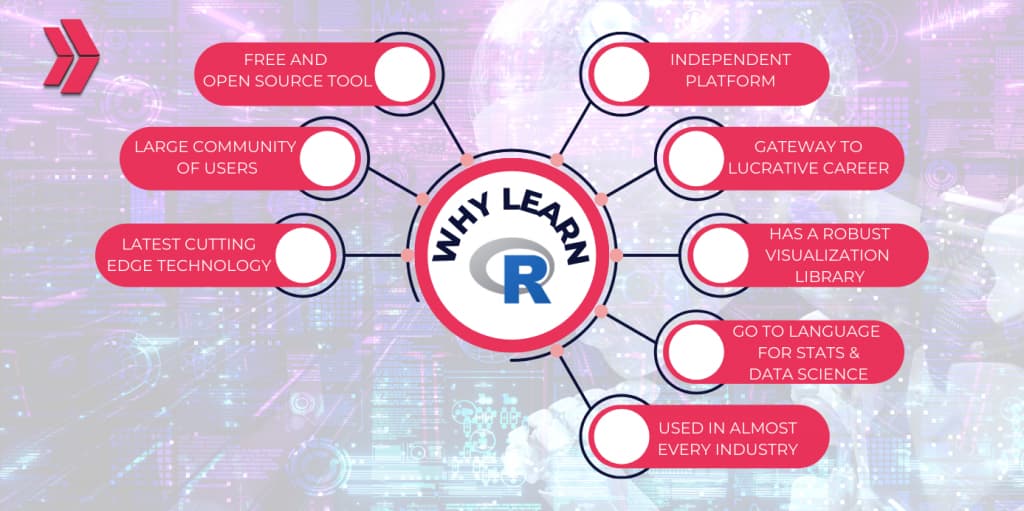
Advantages of using R for data science
The following are some the advantages of the R programming language;
- Open-source programming language.
- Performs machine learning operations.
- Excellent assistance with data manipulation.
- Plotting and graphing of high quality.
- Mostly recognized as the statistical language.
- Handles big and complicated data sets.
- Extensive library of statistical and graphical techniques.
Examples of popular R packages for data science
These are the libraries used in data science;
- Dplyr
- Tensorflow
- ggplot2
- MLR
- Shiny
- Lubridate
- gplot2
- data.table
- plotly
- XGBoost
- Caret
- ggraph
- dygraphs
- ggmap
3. Java
Java is a general-purpose programming language that is widely used in various domains, including data science. Java was created in 1991 as a programming language for digital devices to be “Simple, Resilient, Portable, Platform-Independent, Secure, High Performance, Multithreaded, Architecture Neutral, Object-Oriented, Interpreted, and Dynamic.” Java is commonly referred to as “Write Once, Run Everywhere” and is used for activities such as data analysis, data mining, deep learning, natural language processing, and machine learning.
Advantages of Using Java for Data Science
The following are the advantages of Java programming language;
- Very rapid.
- Easily transportable.
- Constructing ETL processes.
- Performs data tasks such as machine learning techniques.
- Huge library and framework ecosystem.
- Excellent performance.
Examples of Popular Java Libraries for Data Science
These are the libraries used in data science;
- JavaML
- Mahout
- Apache Hadoop
- Apache Spark
- RapidMiner
- Weka
- DL4J
- ADAMS
- Stanford CoreNLP
- DeepLearning4J
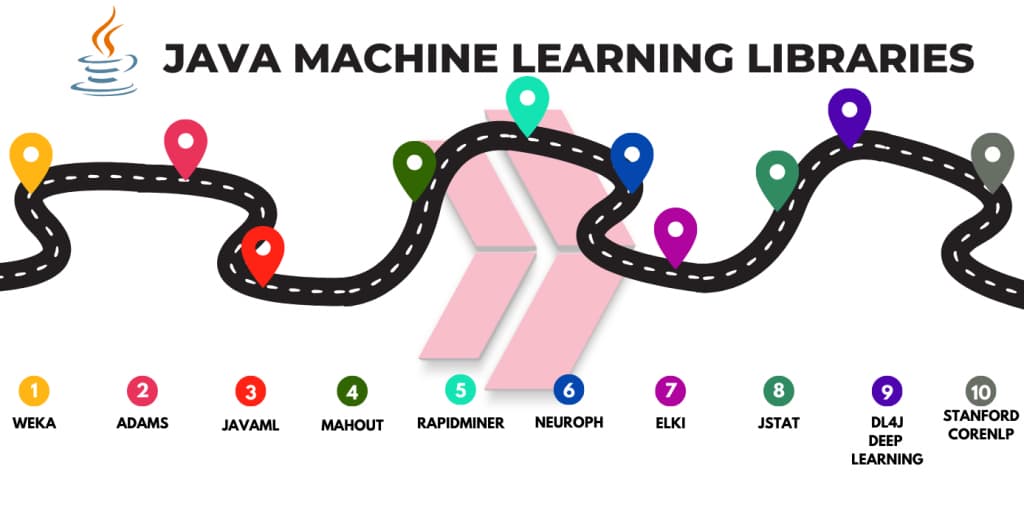
4. Julia
Julia is a high-performance programming language that is intended for scientific computing, data analysis, and numerical computation. It was started in 2009 by Jeff Bezanson, Stefan Karpinski, Viral B. Shah, and Alan Edelman and has grown to over 11.8 million lines of code. The 2019 James H. Wilkinson Prize for Numerical Software and the 2019 IEEE Computer Society Sidney Fernbach Award have been presented to three of the co-creators.
Advantages of Using Julia for Data Science
The following are the advantages of the Julia programming language;
- The global language is quite well-designed (not just for numerical computing).
- Has native support for matrices and datasets.
- Multiple dispatches language.
- Fast.
- No Global Interpreter Lock.
- Can use all cores on your CPU.
- Easy to learn syntax.
- Just-in-time (JIT) compiled
- Vast collection of libraries and packages,
Examples of popular Julia packages for data science
These are the libraries used in data science;
- Flux.jl
- DataFrames.jl
- Knet
- ScikitLearn
- Tensorflow
- MLbase
- Merlin
- UnicodePlots.jl
- MLJ
- MachineLearning.jl
- ANN.jl
- Word2Vec.jl
5. SAS
SAS (Statistical Analysis System) is a software suite that is widely used in data analytics, business intelligence, and statistical analysis. The SAS Institute developed the SAS statistical software package, which may be used for data management, advanced analytics, multivariate analysis, business intelligence, criminal investigation, and predictive analytics. Anthony Barr created it in 1966 to run on IBM System/360 computers, and it was expanded in the 1980s and 1990s with new statistical procedures and additional components. In 2004, a point-and-click interface was implemented, and in 2010, a social media analytics package was launched.

Advantages of using SAS for data science
The following are the advantages of this language;
- Easy to learn.
- Capability to manage a big database.
- Debugging is simple.
- Tested algorithms.
- Customer Support.
- SAS Data Security
- GUI.
- Output.
- Massive Employment Opportunities.
Examples of Popular SAS Products for Data Science
SAS SYSTEM provides modular applications that focus on data access, management, analysis, and presentation. Some of the SAS products for data science are;
- SAS Visual Analytics
- SAS Data Integration Studio
- SAS Enterprise Miner
- SPDS (Scalable Performance Data Server)
- MDDB (multidimensional data structures)
6. Structured Query Language(SQL)
Structured Query Language (SQL) is a programming language specifically designed for managing and manipulating relational databases. Edgar F. Codd’s “A Relational Model of Data for Massive Shared Data Banks” was published in 1970, and Raymond Boyce and Donald Chamberlin created SEQUEL in 1970. Relational Software Inc. created SQL around the end of the 1970s, and Oracle Corporation released Oracle V2 in 1979. SQL tables and queries are not primarily used for data science activities but can be useful for storing, modifying, data cleaning, preprocessing, querying, and retrieving data in relational databases.
To learn more about SQL, you can read the article: What Is SQL? Beginner Guide To The SQL Language.

Advantages of Using SQL for Data Science
The following are the top advantages of structured query language;
- High-Speed Query Processing.
- Interactive language.
- More than one data view.
- Handle massive datasets.
- Data management and retrieval are simple.
- Data joining from various tables is possible.
- Compatible with a wide range of database systems.
Examples of popular SQL Databases for Data Science
There are lots of databases. The most popular databases are;
- PostgreSQL
- Microsoft SQL Server
- MySQL
- SQLite
- IBM Db2 Database
The other databases are;
- MongoDB,
- Oracle,
- Cassandra,
7. MATLAB
MATLAB is a high-level programming language and environment that is widely used in various fields, including data science, engineering, and scientific research. The acronym “MATLAB” stands for “matrix laboratory”. From The University of New Mexico, Cleve Moler, the department’s chairman of computer science, started creating MATLAB in the late 1970s. Cleve wanted his pupils to be able to utilize LINPACK and EISPACK (software libraries for numerical computation created in FORTRAN) without having to learn FORTRAN. Cleve Moler created MathWorks in 1984 after rewriting MATLAB in C with Jack Little and Steve Bangert. At the time, these libraries were known as JACKPAC; subsequently, in 2000, they were improved for matrix manipulation and renamed LAPACK.
Advantages of Using MATLAB for Data Science
The following are the advantages of MATLAB programming language;
- Has a large library of predefined functions.
- Easy creation of advanced data analysis programs.
- Device-Independent Plotting.
- Interactively design Graphical User Interface.
- Offers built-in tools for dynamic visualizations.
- Provides users with a deep learning toolset that seamlessly transitions.
- Simplifying difficult mathematical operations through image processing, fourier transforms, signal processing, and matrix algebra.
Examples of Popular MATLAB Toolboxes for Data Science
The toolboxes in MATLAB are a collection of numerous functions that are built on MATLAB’s computing environment. Here are the toolboxes in MATLAB:
- Statistics and Machine Learning Toolbox
- Curve Fitting Toolbox
- Deep Learning Toolbox
- Datafeed Toolbox
- Image Processing Toolbox
- Text Analytics Toolbox
- Predictive Maintenance Toolbox
- Regression learner
- Image processing
8. Scala
Scala is a programming language for data science, machine learning, and distributed computing. It has an easy-to-learn syntax and a large collection of libraries and frameworks for data science applications. In 2001, Martin Odersky began working on Scala, which was officially released in 2004. In Scala, every value is an object, and every function is a value, making it a pure object-oriented language.
Advantages of Using Scala for Data Science
The following are the advantages of the Scala programming language;
- Easy to learn syntax.
- Incredibly fast.
- With applications ranging from web programming to machine learning.
- Dealing with large data sets.
- Compatibility with Java and usage with Spark.
- Ability to leverage of Java libraries and frameworks.
Examples of Popular Scala Libraries for Data Science
These are the libraries used in data science;
- Spire
- Saddle
- Scalalab
- Vegas Smile
- Breeze-viz
- Apache Spark MLlib & ML
- Apache PredictionIO
- DeepLearning4j
- BigDL
- Deeplearning.scala
9. JavaScript
JavaScript is a programming language that is mostly used for web development but can also be used for data science tasks like data visualization and analysis. In 1994, Marc Andreessen founded Netscape and hired Brendan Eich to integrate the Scheme programming language into the browser. In 1995, Netscape partnered with Sun Microsystems to incorporate Java into Navigator, creating two languages: Java and the scripting language “Javascript”. In May 1995, Marc Andreessen invented the term “Mocha” to refer to the first Javascript code, which was eventually renamed “JavaScript” in December 1995.
Advantages of Using Javascript for Data Science
The following are the advantages of Javascript programming language;
- Can manage many tasks at once.
- Build interactive data visualizations.
- Platform compatibility.
- Simple syntax.
Examples of Popular Javascript Libraries for Data Science
Here are some of the data science libraries of JavaScript;
- Brain.js
- TensorFlow.js
- Synaptic
- ConvNetJS
- ml5.js
- nlp.js
- D3.js
- Chart.js
10. Perl
Perl is a high-level programming language known for its flexibility, expressive syntax, and strong text processing capabilities. Perl was designed by Larry Wall in 1987 as a scripting language to aid with report processing. On December 18, 1987, it was released in version 1.0. Perl 2 was launched in 1988 and had improved regular expression engine. Perl 3 was released in 1989 and included binary data stream capability. Perl 4 was published in 1991 and added richer documentation. Perl 5 was released in 1994 and added new features such as objects, variables, references, and modules. The most recent version, 5.24, was published in 2016. However, it provides no actual benefits to the data science resume.
Advantages of Using Perl For Data Science
The following are the advantages of Perl programming language;
- Easily expandable.
- Can be used with markup languages like HTML and XML.
- Supports Oracle, MySQL, and other databases.
- Integrated with web and database servers platforms.
- GNU-licensed open-source software.
- Capable of handling encrypted web data, including online purchases.
- Cross-platform language.
- Very efficient in text-manipulation.
- Has a lot in common with Python.
Examples Of Popular Perl Modules For Data Science
Here are the data science modules of Perl;
- DBI
- JSON
- LWP::UserAgent
- DateTime
- XML::Simple
- DBD::mysql
- XML::Parser
- WWW::Mechanize
- DBD::Oracle
- Log::Log4perl
- PDL,
- Statistics::R
11. C/C++
C and C++ are widely used programming languages that offer powerful capabilities for low-level system programming, application development, and performance-critical tasks. While they share some similarities, C++ is an extension of the C language with additional features and a more object-oriented approach. Dennis Ritchie created the C programming language in 1972 with the intention of using it in the UNIX operating system. Bjarne Stroustrup created the C++ programming language in 1980 to bring OOP (object-oriented programming) functionality to C without significantly altering the C component. Data Science does not require the use of C++, but it is an excellent choice for implementing data cleaning, preprocessing, and machine learning algorithms optimized at a low level.
Advantages of Using C/C++ for Data Science
The following are the advantages of C/C++ programming language;
- Very fast.
- In less than a second, it can assemble over a gigabyte of data.
- Ideal for big data applications.
- Compiles data quickly.
- Generates highly functional tools.
- Allows for substantial fine-tuning.
- Ability to create high-performance machine learning models.
Examples of popular C/C++ libraries for data science
These are libraries for data science;
- Eigen
- Blitz++
- Armadillo
- Boost
- OpenCV (Open Computer Vision)
- DataFrame
12. Swift
Swift is a compiled programming language used to create iOS, macOS, watchOS, tvOS, iPadOS, and Linux programs. It is influenced by programming languages such as Objective-C, Rust, Haskell, Ruby, Python, C#, CLU, and many more. It is an open-source language that encourages clean and consistent code, provides safeguards to prevent errors, and is interoperable with other programming languages. Swift made its debut at Apple’s Worldwide Developers Conference in 2014.
Advantages of using Swift for Data Science
The following are the advantages of Swift programming language;
- Readable.
- Efficient syntax.
- Scripting capabilities.
- Notebook-like interfaces.
- Automated code building for specialized hardware.
- Performance closer to C.
- Around 8.4x times faster than Python.
Examples of popular Swift libraries for data science
These are libraries for data science;
- Swift4TensorFlow(S4TF),
- Nifty,
- Swiftplot,
- Swift AI,
- Create ML,
- Surge,
- Swix.
13. Go
Google Golang is a statically typed programming language that was released in 2009. It compiles and performs almost as quickly as C. In addition, Go provides type safety, garbage collection, dynamic-typing capability, and advanced built-in types for mission-critical systems. To distinguish it from the Go board game, it is sometimes referred to as “Golang.” Golang or Go is an increasingly popular language, especially for Machine Learning projects. It can be done with tasks like machine learning, big data, command-line scripting, web development, multimedia editing, cloud services, and network server applications.
Advantages of Using Go for data science
The following are the advantages of Go programming language;
- Machine efficient.
- Compiles straight-to-machine code.
- Easier to learn than Python.
- Easy to read/to use/to maintain over time.
- To provide you with a smart library.
Examples of Popular Go Packages for Data Science
These are packages for data science;
- Excelize
- Gopher Data
- Golearn
- Gonum
- Gota
14. Lua
Lua is a lightweight, extensible scripting language known for its simplicity, versatility, and embeddability. Lua is a general-purpose programming language developed in Brazil in 1993 by a group of professors from the Pontifical Catholic University of Rio de Janeiro. It was inspired by the computer language SOL, which is Portuguese for “sun.” Lua code is read line by line, from top to bottom, making it succinct and simple to read and create. It may be used to make games, web applications, and developer tools.
Advantages of Using Lua for Data Science
The following are the advantages of Lua programming language;
- Small size.
- Flexibility.
- Portability.
- Makes a go-to for extending all kinds of programs.
Examples of Popular Lua Libraries for Data Science
These are libraries for data science;
- Torch
- Numeric Lua
- Lunatic-python
- LuaDist,
- LuaStats
15. Ruby
Ruby is a dynamic, high-level programming language known for its simplicity, readability, and productivity. Ruby was invented and developed in Japan in the mid-1990s by Yukihiro Martz Matsumoto to create an object-oriented programming language that could also be used as a scripting language. In 1995, the first public release of Ruby 0.95 was announced, and three further versions were issued.
In 2005, Ruby on Rails was released; in 2008, Ruby 1.8.7 was released. Finally, Ruby version 2.4.0 was released in 2016 and included new features such as hash table improvements, instance variable access, and Array#max and Array#min.
Advantages of Using Ruby for Data Science
The following are the advantages of Ruby programming language;
- Object-oriented.
- Flexibility.
- Expressive feature.
- Mixins (a module can be mixed into a class, which adds the function of that module to the class.
- Physical appearance.
- Duck typing and dynamic typing.
- Handling of exceptions.
- Trash collector.
- Portable.
- Statement delimiters.
- Constants that change.
- Naming conventions.
- Arguments using keywords.
- Names of methods Singleton methods.
- Missing of method.
- Case Sensitive.

Examples of Popular Ruby Libraries for Data Science
These are libraries for data science;
- Daru
- NArray
- RubyData
16. Kotlin
Kotlin is an open-source, statically typed, general-purpose programming language. It runs on the Java virtual machine (JVM) and may be utilized in any environment where Java is currently used. It may be used to build Android apps, server-side apps, and a variety of other things. Kotlin was designed by the JetBrains team. The language was created as part of a project that began in 2010 and was officially released in February 2016. The Apache 2.0 License was used to create Kotlin.
Advantages of Using Kotlin
The following are the advantages of Kotlin programming language;
- Concise.
- Null safety.
- Interoperable.
- Smart cast,
- Time for compilation,
- Tool-friendly,
- Extension function.
Examples of popular Kotlin libraries for data science
Here are the libraries about data science;
- Multik
- KotlinDL
- Kotlin DataFrame
- Kotlin for Apache Spark
- kotlin-statistics
- kmath
- lets-plot
- londogard-nlp-toolkit
- Koma
- SimpleDNN
- LinguisticDescription
Final Words
Data science is a specialty that is in high demand and is a must for companies looking to gain a competitive edge. Python is the most popular programming language for data science. Massive amounts of data are stored in data warehouses with SQL access. R and Python, with their more advanced statistical analysis capabilities, provide the most valuable insights into these data. Python is the best data science programming language, with 34% of users claiming it to be the best. It is open-sourced, has engaged and active communities, and is statistically powerful.
The rise of data science has been exceptionally fast and is in huge demand. Find out the Clarusway’s data analytics course and machine learning course so you can have the highest chance of succeeding in data science.
Last Updated on February 14, 2024

